According to recent figures, Google has indexed over 56 billion pages in its search engine. There are almost 2 billion websites in 2022 and the number is quickly growing. Even if we cut the number down to active websites in the SERP, there are still more than 200 million active websites being indexed by Google. By the time you finish reading this article, there will likely be many more. With so much information being shared online, Google is constantly updating its algorithm to serve users the best and most accurate content. And while there are numerous important ranking factors considered in the algorithm, one factor has become increasingly more important in today’s busy SERP. That, of course, is Query Deserves Freshness.
Query Deserves Freshness (QDF)
We don’t really need to speculate as to whether having new or “fresh” content is an important ranking factor in the SERP or not. Ever since the freshness algorithm update back in 2011, QDF, or “Query Deserves Freshness”, has been an official ranking factor in Google’s algorithm. Content freshness is important because Google wants to provide users with the most recent and relevant information available. Updating content and regularly adding important information to your site will indicate to the search engines that your content is up-to-date, maintained, and likely useful to your users.
When QDF Is Most Important
It’s important to note, that QDF isn’t necessarily applied equally to all searches on the web. For example, your blog post about ‘The History of Abraham Lincoln’s Assassination’ probably doesn’t need the same content freshness boost as your report on ‘The Latest Trends In The Shipping Industry.’ In fact, Google experts have even outlined when QDF is most important. According to senior experts at Google, QDF is most relevant for time-sensitive searches, such as recent events or hot topics, regularly occurring events, and topics that require frequent updates. The intent of the searcher plays a big role in QDF. The more ‘recency’ is important to the user’s specific search, the more likely QDF will be an important ranking factor in the SERP.
Take for example, one of the probably more frequently asked questions these days – ‘when will COVID end?’. New data surrounding COVID-19 and its variants are constantly being brought to the surface and people around the world are looking for the most accurate and up-to-date information to guide them. If there is any search that should require QDF, this is it. Now take a look at the SERP.
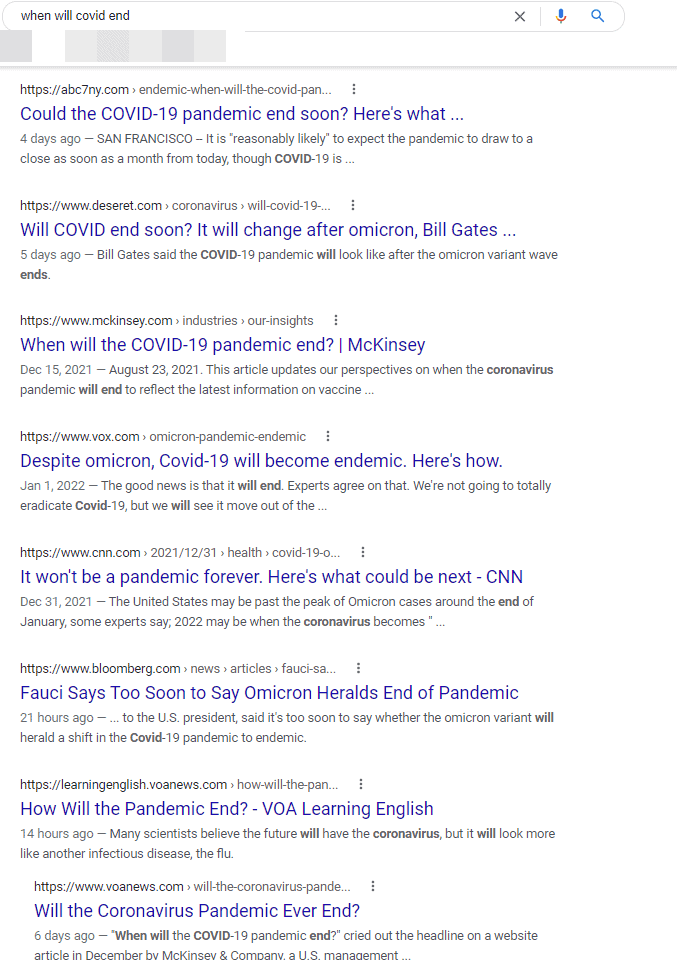
Most of the results are within the last week! Almost all of them don’t go any further back than a month ago. Now, this may be an extreme example, but more and more often we are seeing Google serve posts and articles that are recent, updated, and meet QDF criteria where relevant. If you want your pages to rank well moving forward, it’s best to understand how to optimize your site for QDF content. Below we’ve outlined six strategies you can take to ensure your site is serving the most relevant and updated content and enable you to compete in even the toughest of markets.
1. Crawl Your Site For Old Content
Where to begin? Performing a site audit for old content is a great place to start. We recommend using a crawling tool like Screaming Frog to search for old dates in URLs, title tags, headers, and content and to filter by publication date. Content that is out-of-date, no longer relevant, or doesn’t receive significant traffic can either be redirected to more recent and relevant pages on your site or can be updated and even rewritten to match current industry data and trends.

2. Refresh Your Content Instead Of Creating New Pages
Updating content on an existing URL is a great way to optimize for QDF. Instead of creating a new post on the same topic, which could potentially cannibalize your rankings and confuse your readers, you can update your existing content to be more relevant. By keeping the same URL, you can also take advantage of the backlinks and “Page Authority” that the URL has built over time. Take for example the client case below: We created a URL that would be applicable across time. In this case ‘/marketing-trends/’ as opposed to ‘/marketing-trends-2021/’
This way we can update the headers, metadata (title tag/meta description), content, and publish date for the current year while still maintaining page authority and backlinks.
As seen in the example below, there is going to be a seasonal dip as the search around ‘2020/2021’ becomes less relevant. But by utilizing the same page and URL in January, we were immediately able to rank and capture traffic surrounding mobile marketing trends in 2021.

3. Regularly Update Your Pages
Updating a single page regularly with the newest industry coverage provides you with the ability to maximize your page authority while optimizing for content freshness. This includes updating your page with relevant statistics, current dates, newest industry trends and information, old and broken links, and industry happenings.
During the pandemic, for example, we saw a lot of volatility across a particular client’s industry and a lot more news-type posts ranking in the SERP. As a result, we recommended our client create a news page for industry updates and changes. With new relevant information regularly being added and updated to the page, Google ended up ranking this page at the top of the SERP, and the updates page ended up being the company’s highest organic traffic page moving into 2022.
Regular updates can even be valuable for older posts as well. If there is something to update and new information on a topic that is useful to your readers, regularly updating older posts will signal to Google that your post is still very much relevant too.
4. Update Title Tags For Improved CTR
According to SEO Clarity’s 2021 Research Study (the largest CTR study ever conducted), including the date in the title tag may not only benefit your ranking position but may even improve your click-through rate in the SERP. Including the date in your title tag shows the searcher that your content is up-to-date and potentially more relevant than the other options in the SERP. If you are in a competitive industry, this can really separate you from the pack.
When we added month and date to one of our client’s pages, we saw an immediate increase in CTR.
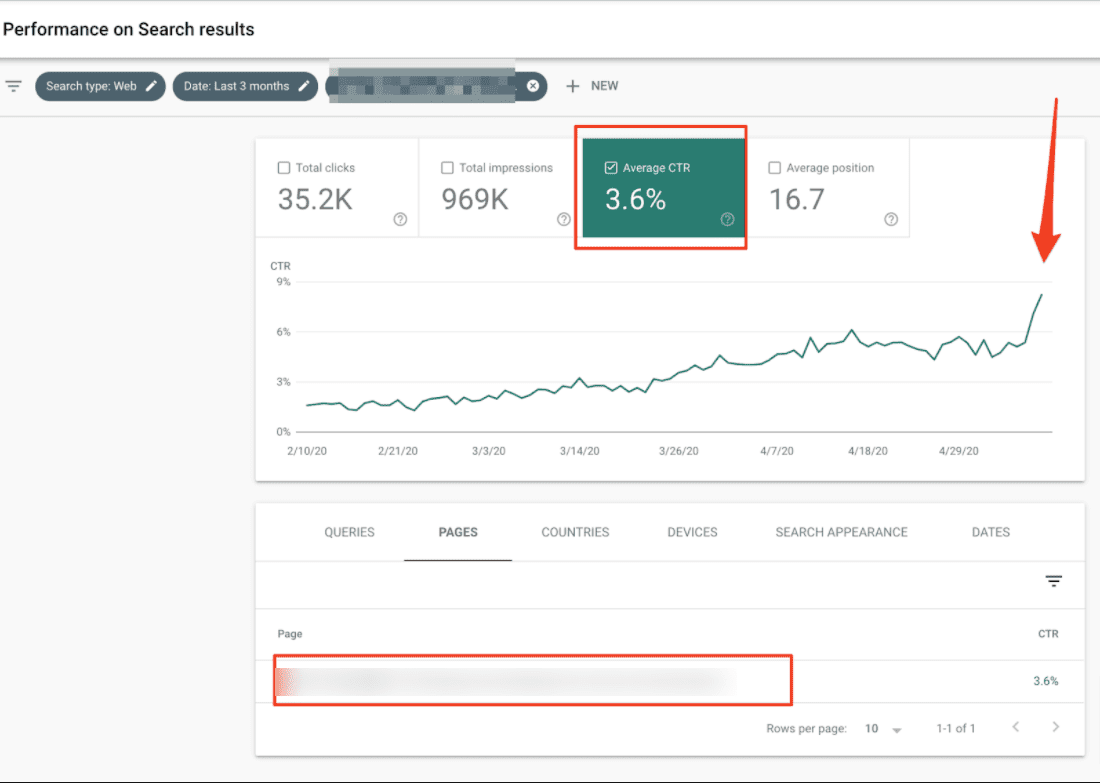
We had so much success, that in months following the title tag update, we even began to see a number of our competitors trying to replicate our strategy.
5. Use The Date In Your Content
For experienced SEO professionals, this one may seem obvious, but if you want to rank for keywords with the date as a modifier, you need to target these keywords in the text. This means including the date in your title tag , H1s & H2s, in the context of your text, and as alt text where relevant.
Using this strategy, we began to start ranking for keywords with ‘2022’ as a modifier as early as mid-December 2021 and these keywords contributed significant traffic to the site. If users are searching for keywords with the year as a modifier, it just makes sense to try to optimize for those terms.
You will likely start to lose traffic for 2021 modifiers, but as these modifiers become outdated and start to lose impressions, they will become less relevant anyway. In the case below, we actually only had a slight temporary dip in overall traffic for keywords with the date as a modifier and then total organic traffic was even stronger than before (see below)
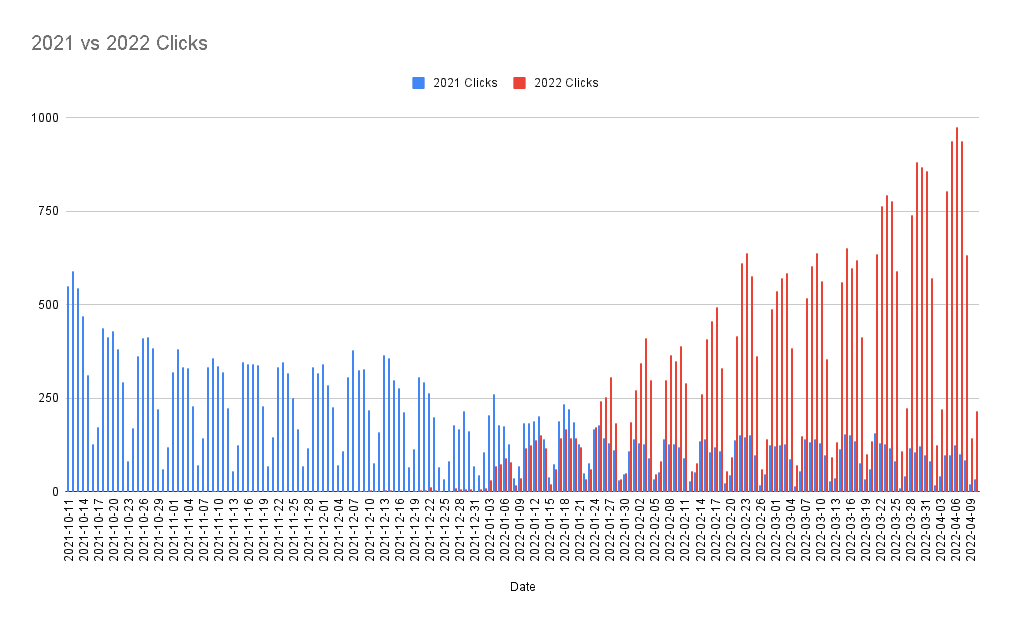
6. Republish Your Posts
Republishing old blog posts is yet another great way to get more traffic to your posts, and it’s fairly easy. All you need to do is log into your site’s CMS, find your old blog post, change the publish date, and hit update.
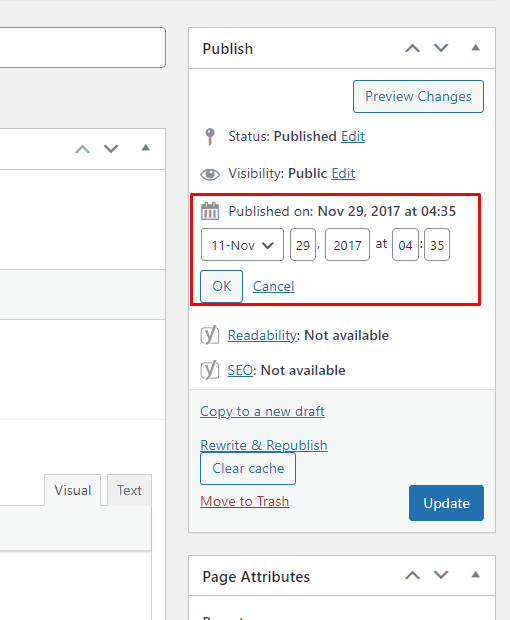
Sounds too good to be true? Well, that’s because, in reality, it is a little more complex than just hitting the update button. Disclaimer: Republishing a post without updating the page itself won’t do much to improve your performance and it is even frowned upon by Google. However, combining this tactic with refreshing your content, updating title tags, including the date in your content and many of the other strategies we discussed in this post, can end up significantly improving your likelihood of ranking better (see our client case below)
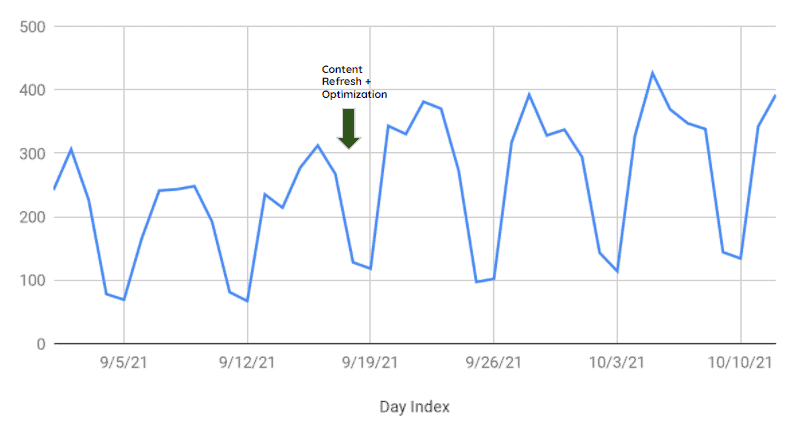
In the same vein, updating and refreshing the content of a post from 2014 without republishing your page may limit your ability to compete with more recent publications in the industry.
Wrapping Up
With so much happening in today’s world, it’s important to serve users with the most accurate and updated information available. If you are able to keep your site up-to-date and offer quality and relevant information, the Google algorithm is likely to reward you.
Of course, ensuring that you are offering the best and most relevant content is easier said than done. We’ve used the above-mentioned tactics described below:
- Crawl Your Site For Old Content
- Refresh Your Content Instead Of Creating New Pages
- Regularly Update Your Pages
- Update Title Tags For Improved CTR
- Use The Date In Your Content
- Republish Your Posts
Follow these strategies, and you’re likely to see the same growth and impact that we did.

